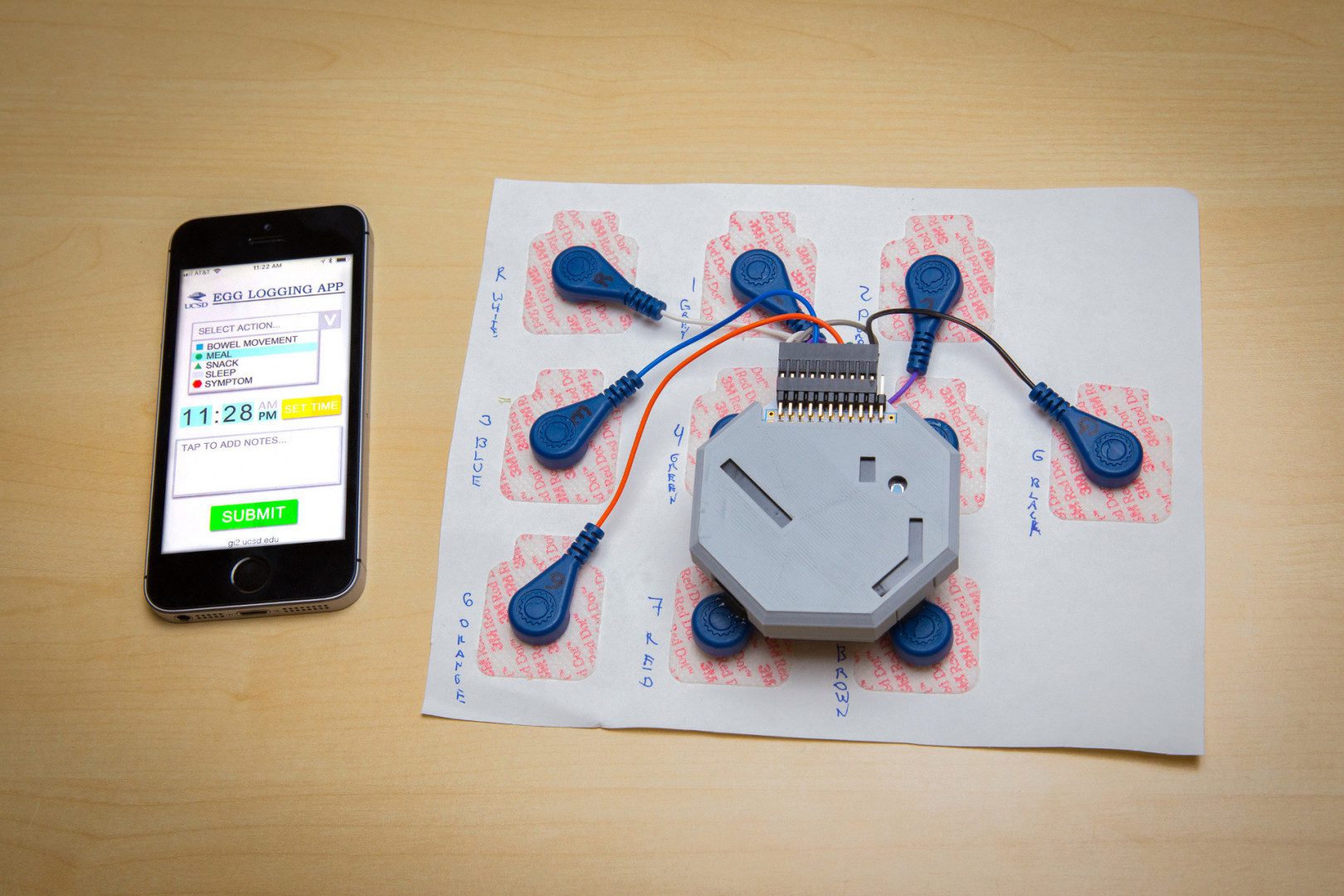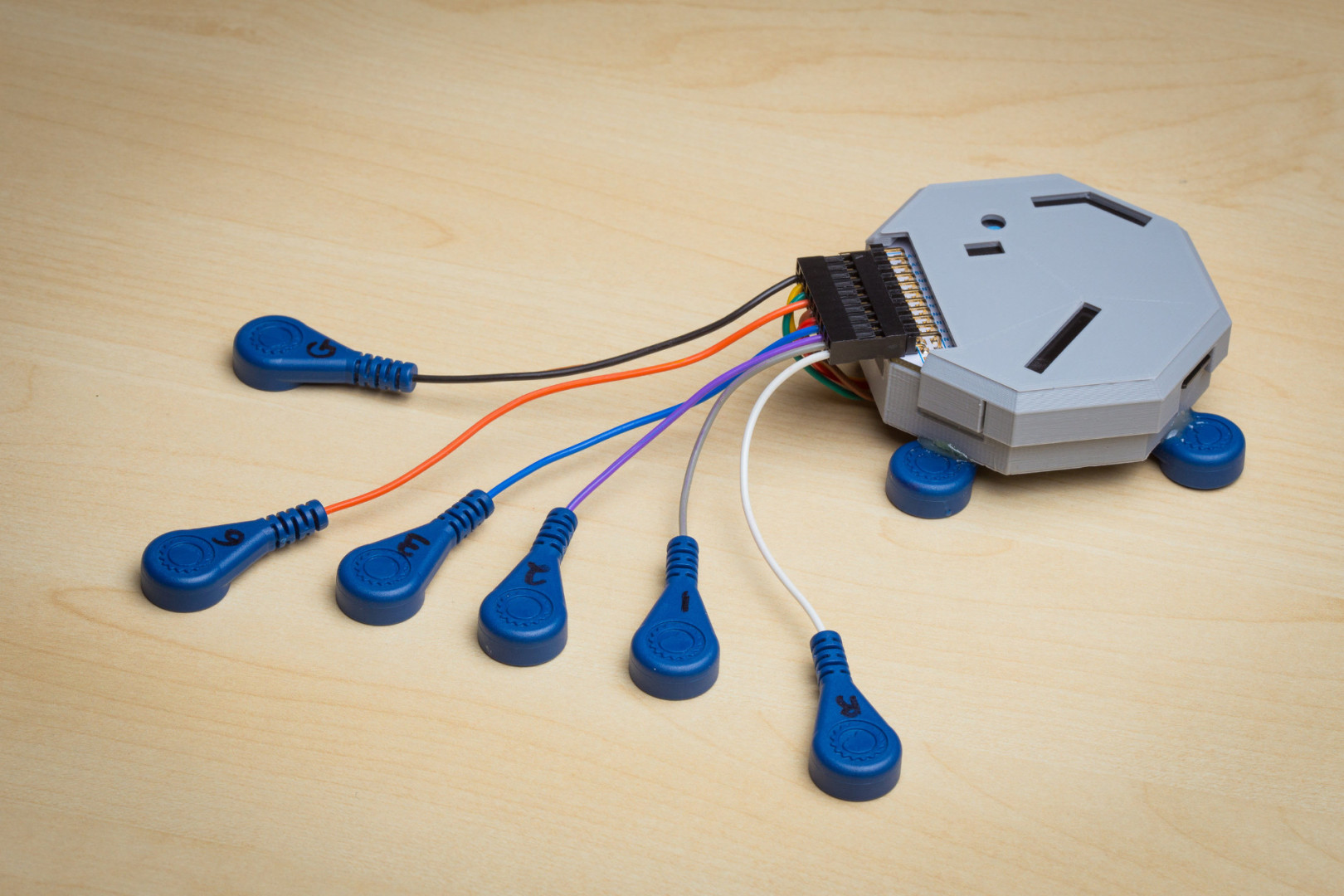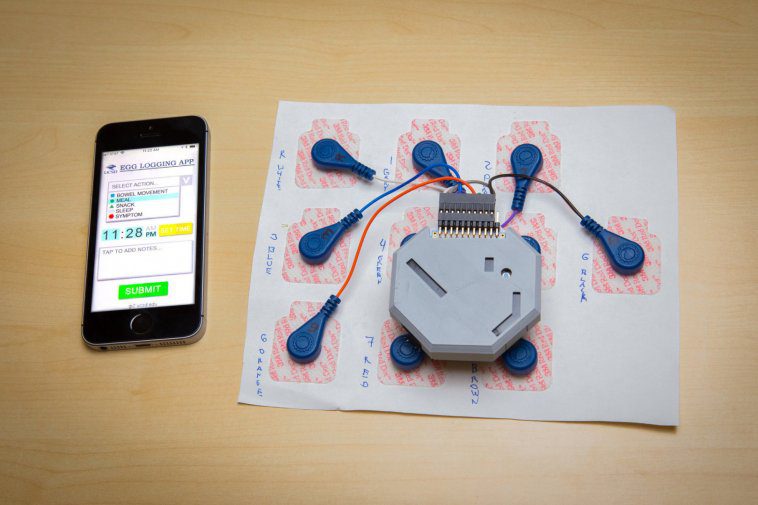Scientists at UC San Diego create a 3D printed wearable to monitor stomach activity throughout the day, replacing the need for invasive probes.
A team of engineers and physicians at the University of Sand Diego have developed a wearable, non-invasive system to monitor electrical activity in the stomach over 24 hours. Essentially, it’s an electrocardiogram but for the gastro-intestinal (GI) tract.
Applications include monitoring GI activity for patients outside of a clinical setting, which cuts down costs. Monitoring over longer periods of time also increases the likelihood of capturing abnormal events.
The team tested the device, a 3D printed portable box connected to 10 small wearable electrodes, on 11 children and one adult volunteer. They found that data collected with the wearable system were comparable to data collected in the clinic with state-of-the-art methods, which are invasive–including a catheter inserted through the patient’s nose.
They also discovered that the stomach’s electrical activity changes not only around meals, but also during sleep, following its own circadian rhythm.
“We think our system will spark a new kind of medicine, where a gastroenterologist can quickly see where and when a part of the GI tract is showing abnormal rhythms and as a result make more accurate, faster and personalized diagnoses,” says Armen Gharibans, the paper’s first author and a bioengineering postdoctoral researcher at the University of California San Diego.

Testing the 3D Printed Wearable
The device uses off-the-shelf electrodes used in electrocardiograms. The electronics and battery are encased in a 3D printed box and connected to the electrodes, which fit on a person’s abdomen just over the stomach.
The researchers worked with Dr. Hayat Mousa and tested the device on 11 pediatric patients at Rady Children’s Hospital in San Diego. These patients had been undergoing an invasive procedure called manometry, one of a couple clinical gold standards for objectively monitoring GI tract activity. The procedure requires using a catheter inserted through the nose to measure pressure at several points inside the stomach.
Comparing the two methods showed that data collected by the wearable device was robust and reliable.
“I have been practicing pediatric gastroenterology and taking care of patients for 20 years,” says Dr. Mousa. “The technique outlined in this paper is the best way to evaluate children with motility and functional GI disorders. It provides the information without need for sedation and it offers the flexibility to monitor kids while they continue their daily activities.”
The system is currently paired with a smart phone app that allows patients to log their meals, sleep and other activities. The long-term goal is to design an app that would allow patients and physicians to see the data collected by the device in real time.
Interested in learning more? Researchers detail their findings in the 22 March issue of Nature’s open access journal Scientific Reports.

Source: UC San Diego News Center
Website: LINK


